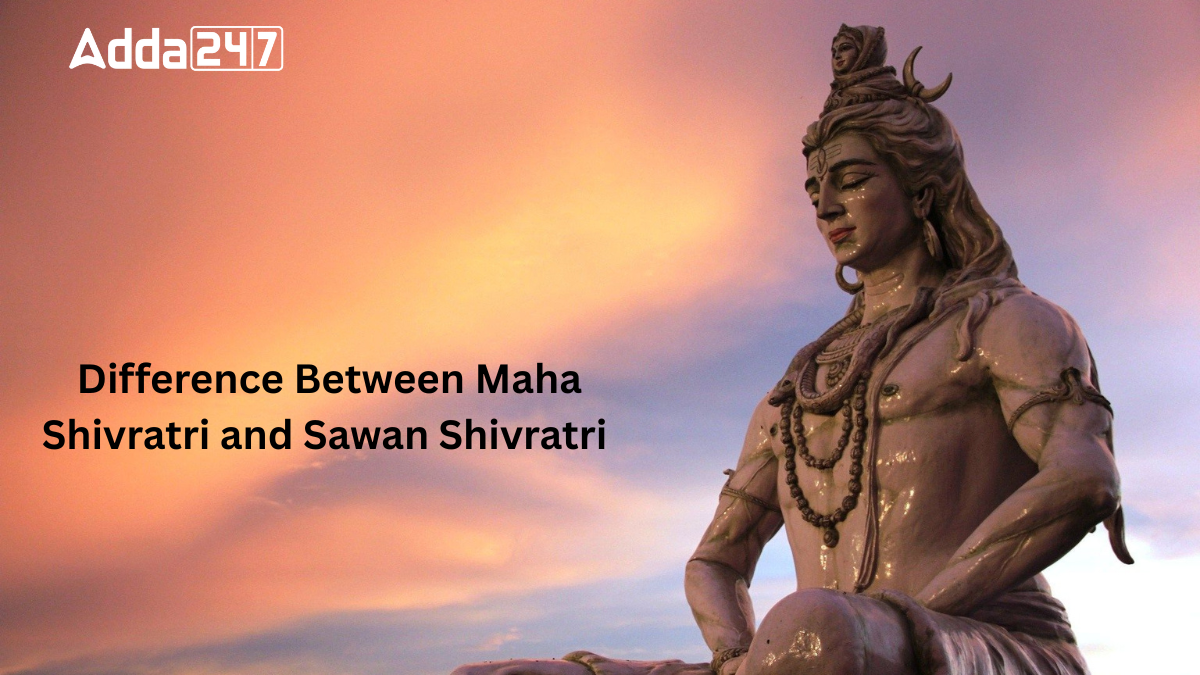Shivratri is a sacred festival dedicated to Lord Shiva, celebrated by millions of devotees across India. There are two main types – Mahashivratri and Sawan Shivratri. While both are important, they differ in their timing, significance and rituals. Mahashivratri is a grand annual celebration, while Sawan Shivratri falls during the holy month of Sawan. Let’s understand the key differences between these two auspicious occasions.
What is Mahashivratri?
Maha Shivratri is known as the “Great Night of Shiva.” It is celebrated once a year on the 14th day of Krishna Paksha (waning moon) in the month of Phalguna (February – March). In 2025, Mahashivratri will be celebrated on February 26.
This festival is very important because it marks the divine margins of Lord Shiva and Goddess Parvati. Many devotees also believe that on this night, Lord Shiva performed the Tandava Dance, which represents the cycle of creation and destruction.
How is Maha Shivratri Celebrated?
- Devotees observe fasting (some without water, some with fruits and milk).
- They visit temples and offer milk, bel leaves and water to Shiva Lingam.
- Many people stay awake all night, chanting Shiva’s name and meditating.
- Special prayers and bhajans are sung in temples.
What is Sawan Shivratri?
Sawan Shivratri is a special Shivratri that falls in the holy month of Sawan (Shravan), which is usually in July or August. In 2025, Sawan Shivratri will be celebrated on July 23.
The entire month of Sawan is considered sacred for Shiva worship and every Monday during this month is also special. However, Sawan Shivratri has extra significance and devotees believe that praying on this day brings blessings, peace and prosperity.
How is Sawan Shivratri Celebrated?
- Devotees fast for the entire day and break their fast after worship.
- Special Shiva Abhishek (ritual bathing) is performed with milk, Ganga water, honey and curd.
- People visit famous Shiva temples, especially in North India, where grand celebrations take place.
- In many regions, devotees, known as Kanwariyas, collect holy Ganga water and offer it to Lord Shiva.
Difference Between Maha Shivratri and Sawan Shivratri
Maha Shivratri and Sawan Shivratri are both special festivals dedicated to Lord Shiva. Maha Shivratri is the “Great Night Shiva,” while Sawan Shivratri is observed in the holy month of Shravan, making both significant for devotees.
| Basis of Difference | Maha Shivratri | Sawan Shivratri |
| Meaning | The Great Night of Shiva, celebrating devotion, transformation and spiritual awakening. | A special Shivratri observed in the holy month of Sawan. |
| Date of Celebration | 14th day of Krishna Paksha in Phalguna (February-March). | 14th day of Krishna Paksha in Shravan (July-August). |
| Significance | Celebrates Shiva and Parvati’s wedding and the Tandava dance. | Part of the sacred Sawan month, known for Shiva’s blessings. |
| Observance | Celebrated across India with grand processions, fasting and prayers. | Mainly observed in North India, with fasting and temple visits. |
| Fasting | Strict fasts (some without water) and night-long prayers. | Day-long fast, offering milk, bel leaves and Ganga water. |
| Famous Temples | Celebrated at Kashi Vishwanath (Varanasi), Mahakaleshwar (Ujjain), Kedarnath, Amarnath and Pashupatinath (Nepal). | Observed in Jyotirlingas and local Shiva temples, especially in North India. |
| Kanwar Yatra | Not linked to Kanwar Yatra. | Part of the Kanwar Yatra tradition, where devotees carry Ganga water for Lord Shiva. |
| Popularity | Major festival across India. | Popular in North Indian states like Uttar Pradesh, Bihar, Madhya Pradesh and Rajasthan. |



 Which Indian City is Known as the Footwe...
Which Indian City is Known as the Footwe...
 Which Desert is known as the Cold Desert...
Which Desert is known as the Cold Desert...
 Top-10 News Media Companies in the World...
Top-10 News Media Companies in the World...







